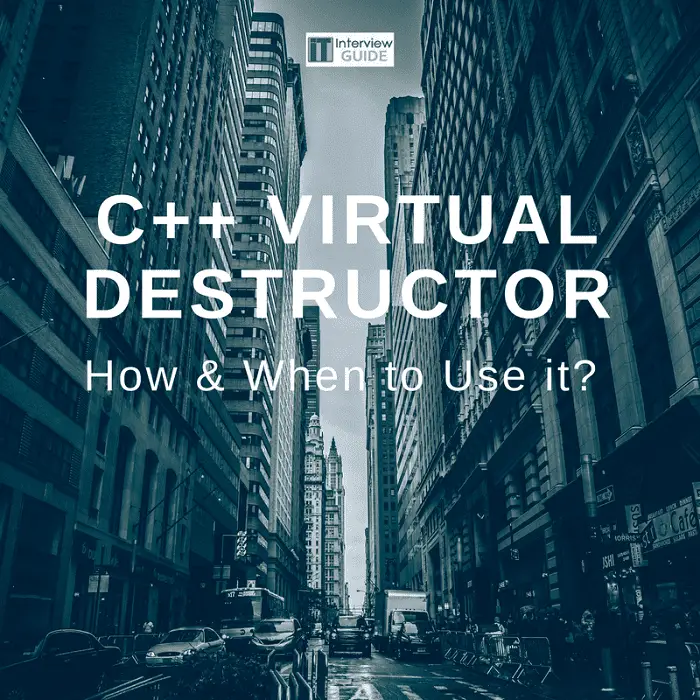Table of Contents
Do?destructors always get called for every object, or do we need to make them virtual? What?is a virtual destructor anyway? We will try to answer these (and more) questions in this step by step guide to virtual destructors ?and pure virtual destructors in C++.
*This post may contain affiliate links. As an Amazon Associate we earn from qualifying purchases.
What is a Virtual Destructor?
A destructor function is the inverse of a constructor function. Destructors are used when clean-up is necessary due to an object coming to an end since C++ does not have garbage collection like other languages such as Java. This destructor will call derived classes before the base class, whereas non-virtual destuctors will only delete base class objects.
What is a Pure Virtual Destructor?
Pure virtual destructors are used with abstract classes. Since every abstract class needs a pure virtual function, some programmers like to make the destructor pure virtual as a reminder that the class is abstract. In some cases, it is preferable to use pure virtual destructors rather than just a virtual one?when no virtual calls are necessary.
How to Use a Virtual Destructor?
C++ uses ~ to define destructors. Making a destructor virtual is relatively simple. For example:
class MyBase
{
public:
MyBase()
{
printf(“\nConstructor\n”);
}
~virtual MyBase()
{
printf(“\nDestructor\n”);
}
};
Since C++ doesn’t have garbage collection, you need to manually delete all objects you created with new. For example:
MyClass::~class1(void)
{
delete object1;
delete object2;
}
Conclusion
When deleting an instance of an object, if we delete it through a base pointer without virtual destructors, the base class destructor will be called, which can cause memory leaks. Some programmers argue that if a class has any virtual function, it needs a virtual destructor, but here is a better rule of thumb. According to Sutter,”A base class destructor should be either public and virtual, or protected and nonvirtual.”

